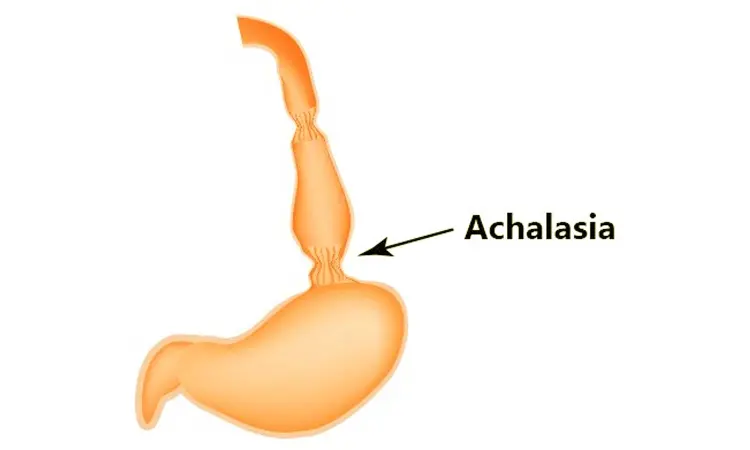- Home
- Medical news & Guidelines
- Anesthesiology
- Cardiology and CTVS
- Critical Care
- Dentistry
- Dermatology
- Diabetes and Endocrinology
- ENT
- Gastroenterology
- Medicine
- Nephrology
- Neurology
- Obstretics-Gynaecology
- Oncology
- Ophthalmology
- Orthopaedics
- Pediatrics-Neonatology
- Psychiatry
- Pulmonology
- Radiology
- Surgery
- Urology
- Laboratory Medicine
- Diet
- Nursing
- Paramedical
- Physiotherapy
- Health news
- Fact Check
- Bone Health Fact Check
- Brain Health Fact Check
- Cancer Related Fact Check
- Child Care Fact Check
- Dental and oral health fact check
- Diabetes and metabolic health fact check
- Diet and Nutrition Fact Check
- Eye and ENT Care Fact Check
- Fitness fact check
- Gut health fact check
- Heart health fact check
- Kidney health fact check
- Medical education fact check
- Men's health fact check
- Respiratory fact check
- Skin and hair care fact check
- Vaccine and Immunization fact check
- Women's health fact check
- AYUSH
- State News
- Andaman and Nicobar Islands
- Andhra Pradesh
- Arunachal Pradesh
- Assam
- Bihar
- Chandigarh
- Chattisgarh
- Dadra and Nagar Haveli
- Daman and Diu
- Delhi
- Goa
- Gujarat
- Haryana
- Himachal Pradesh
- Jammu & Kashmir
- Jharkhand
- Karnataka
- Kerala
- Ladakh
- Lakshadweep
- Madhya Pradesh
- Maharashtra
- Manipur
- Meghalaya
- Mizoram
- Nagaland
- Odisha
- Puducherry
- Punjab
- Rajasthan
- Sikkim
- Tamil Nadu
- Telangana
- Tripura
- Uttar Pradesh
- Uttrakhand
- West Bengal
- Medical Education
- Industry
Achalasia and Allergies: New Study Reveals Strong Association with Eosinophilic Esophagitis and Allergic Disorders

Achalasia, a disorder characterized by impaired esophageal motility, has long been considered an autoimmune disease affecting the esophageal myenteric neurons. However, a recent study published in the journal of Clinical Gastroenterology and Hepatology: The Official Clinical Practice Journal of the American Gastroenterological Association by Chanakyaram A. Reddy and a team of researchers proposed an alternative hypothesis suggesting that some cases of achalasia may be driven by allergies, specifically a form of eosinophilic esophagitis (EoE). The researchers aimed to investigate the epidemiological support for this hypothesis by examining the frequency of EoE and other allergic disorders in achalasia patients using the Utah Population Database.
The study utilized International Classification of Diseases (ICD) codes to identify patients with achalasia and various allergic disorders, including EoE, asthma, atopic dermatitis, and others. They calculated the relative risk (RR) for each allergic disorder by comparing the observed number in achalasia patients with the expected number in individuals matched for birth year and sex. Sub-analyses were also performed to compare patients aged 40 years and younger versus those over 40 years.
● Among the 844 identified achalasia patients (with a median age at diagnosis of 58 years and 55% female), 402 individuals (47.6%) had at least one allergic disorder.
● 55 achalasia patients (6.5%) were diagnosed with EoE, resulting in a significantly increased RR of 32.9 (95% CI, 24.8-42.8; P < 0.001) compared to the expected number of cases.
● In the subgroup analysis of 208 achalasia patients aged 40 years and younger, the RR for EoE was even higher at 69.6 (95% CI, 46.6-100.0; P < 0.001).
● Furthermore, the RR for other allergic disorders, such as dermatitis, allergic rhinitis/conjunctivitis, hives/urticaria, and anaphylaxis, was also significantly elevated, all exceeding threefold above population rates.
These findings strongly support the hypothesis that achalasia can be associated with EoE and other allergic disorders. The use of ICD codes in the Utah Population Database allowed for the identification and analysis of a substantial number of achalasia patients and their allergic comorbidities. The study suggests that achalasia may have an allergic etiology in some cases, highlighting the importance of careful evaluation and potential treatment of EoE in achalasia patients before considering definitive therapies for achalasia.
The researchers emphasize the significance of these findings, noting that documented cases have shown esophageal motility abnormalities resembling achalasia resolving with EoE treatments. Therefore, it is recommended to assess achalasia patients for EoE and, if diagnosed, to treat EoE before pursuing definitive therapies for achalasia. Further research is needed to explore the underlying mechanisms linking allergies and achalasia and to determine the optimal management strategies for patients with this comorbidity.
Reference:
Reddy, C. A., Allen-Brady, K., Uchida, A. M., Peterson, K. A., Hoffman, A. M., Souza, R. F., & Spechler, S. J. (2023). Achalasia is strongly associated with eosinophilic esophagitis and other allergic disorders. Clinical Gastroenterology and Hepatology: The Official Clinical Practice Journal of the American Gastroenterological Association. https://doi.org/10.1016/j.cgh.2023.06.013
Dr Kamal Kant Kohli-MBBS, DTCD- a chest specialist with more than 30 years of practice and a flair for writing clinical articles, Dr Kamal Kant Kohli joined Medical Dialogues as a Chief Editor of Medical News. Besides writing articles, as an editor, he proofreads and verifies all the medical content published on Medical Dialogues including those coming from journals, studies,medical conferences,guidelines etc. Email: drkohli@medicaldialogues.in. Contact no. 011-43720751


